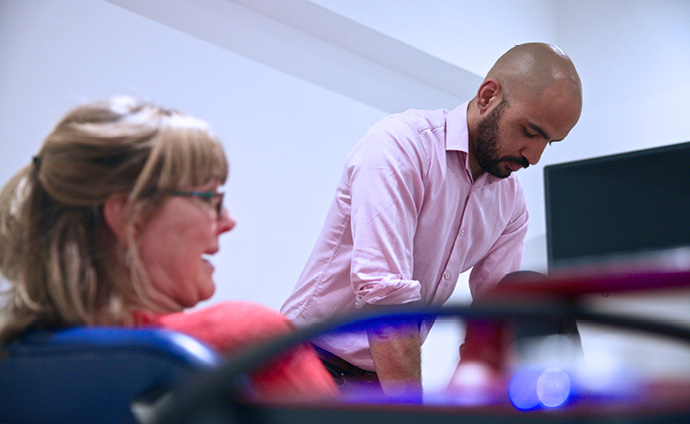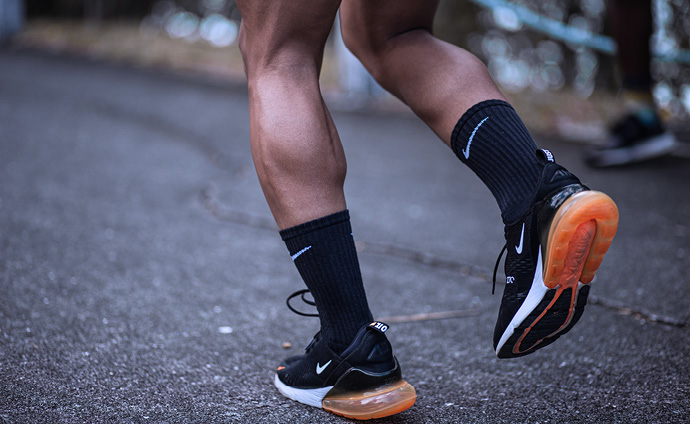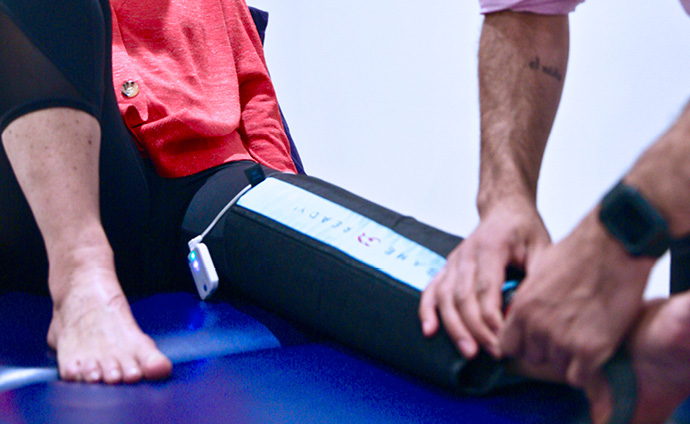You may have read our previous article where we explain what shin splints are and run through some of the common causes, symptoms and other conditions that are sometimes mistaken for shin splints. If you haven’t, we suggest you go back and read it now.
If you already know you are definitely suffering from shin splints but the usual rest and icing hasn’t improved your condition, what should you do? Come and see a physio at Spectrum’s London clinic, of course! We have a few extra tricks up our sleeves to help you get back to being pain-free and able to enjoy exercising again.

The easiest way to explain how we can help is to share a recent example, a patient of Rob’s, who was training for the London Marathon. While rest and icing may sometimes be enough to reduce the severity of shin splints and minimise pain, more severe cases will require intervention from a trained physio to see long lasting improvements. In this specific case, time was of the essence, as this patient couldn’t afford to rest for too long — they had a marathon to train for, after all — so physiotherapy was able to significantly speed up the healing process.
Rob had a new patient come to see him in the lead up to the London Marathon, complaining of shin splints. After an initial examination, Rob saw that they had both issues with their tibialis posterior muscle, which is the muscle on the inside of the shin, and their feet.
 “Ultimately a lot of their problems were stemming from the fact they were wearing inappropriate running shoes because they were quite flat footed. They’d just gone down to the shops and just bought a pair of trainers that didn’t do anything to help correct flatfeet,” explains Rob.
“Ultimately a lot of their problems were stemming from the fact they were wearing inappropriate running shoes because they were quite flat footed. They’d just gone down to the shops and just bought a pair of trainers that didn’t do anything to help correct flatfeet,” explains Rob.
“This was causing a dysfunction of the tibialis posterior muscle, because its job is to hold up the arch of your foot when you’re walking and running and they were overloading that muscle by running with the wrong footwear. This meant they had also overloaded their plantar fascia band in the bottom of their feet, so they basically had this huge dysfunction around the foot and ankle. The way that their pain was manifesting was on the inside of the shin, rather than the foot or ankle as you might expect.”
Rob determined that what he needed to do to treat the patient was a combination of corrective exercises to reduce the inflammation and tension as quickly as possible and activate some of the muscles that needed to work a bit harder. All of this would result in pain relief.
“We gave them a series of exercises to improve the arch of their foot as much as we possibly could, plus some that were designed to strengthen the calf and glute to try and offload how much work those muscles were currently having to do.” says Rob.

“Then we also wanted to decrease the tension and inflammation in the tissue around the area, so we used our GameReady ice/compression unit on their legs to speed up the healing process. We also used TENS therapy to decrease the tension in the tibialis posterior muscle and activate the layers of the calf that we want to get into with the exercises I mentioned before, just to make them work even more effectively. If the plantar fascia issue had been bad enough we could have also done some Shockwave treatment on that area, but in this particular case it wasn’t required. And finally, we also did some hands-on therapy to help relieve the pain.”
Rob reports that this patient managed to run the marathon and was super happy with their results, which would probably have not been possible if they had just backed off their training and not bothered to correct some of the issues that were causing their shin splints in the first place. And they probably would have continued to have flare ups for as long as they were running long distances…
If you think we could help you recover faster and get you back to doing the exercise you love sooner, please book an appointment via our website. Life’s too short to be in pain!



